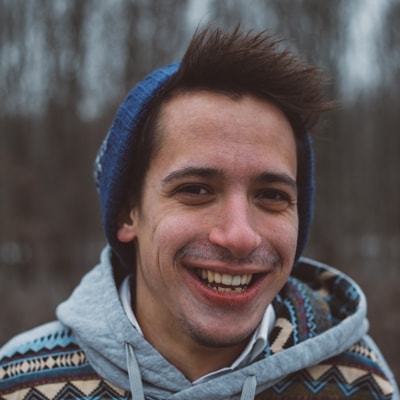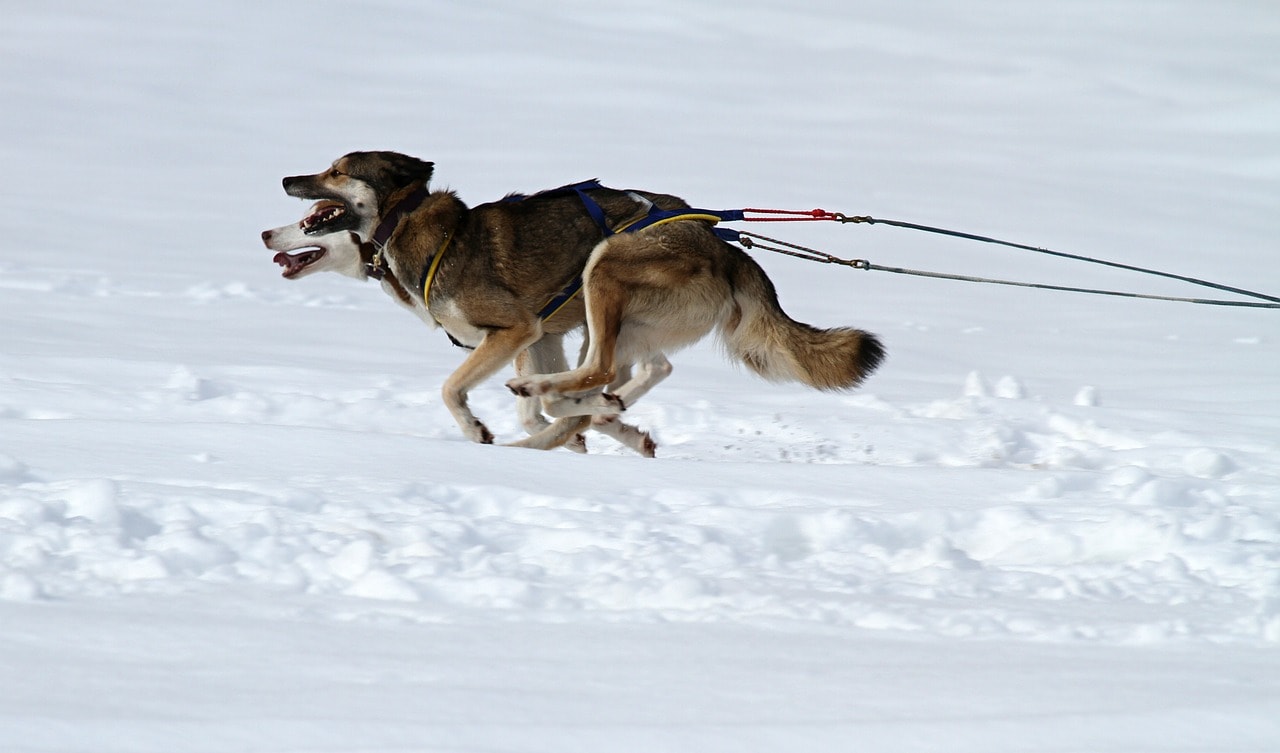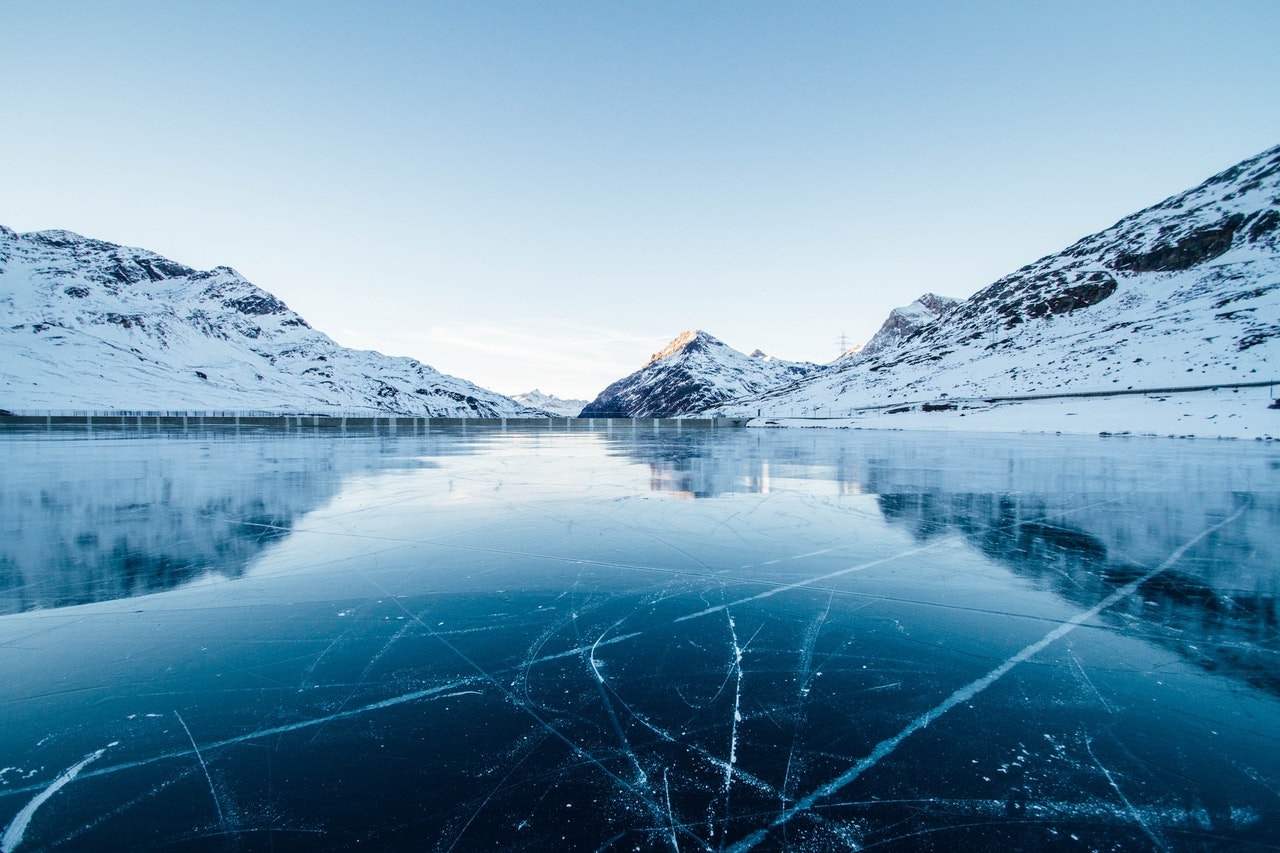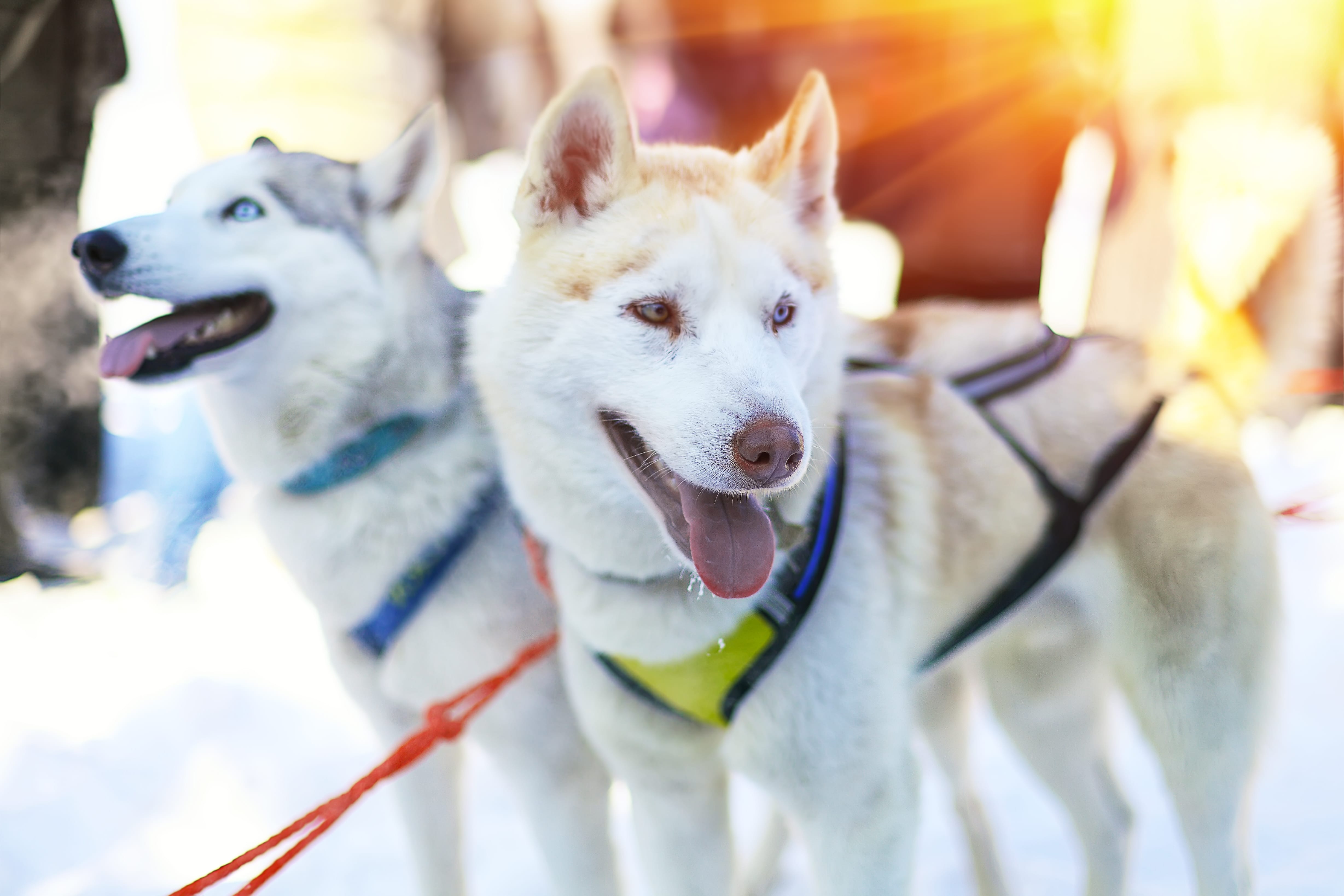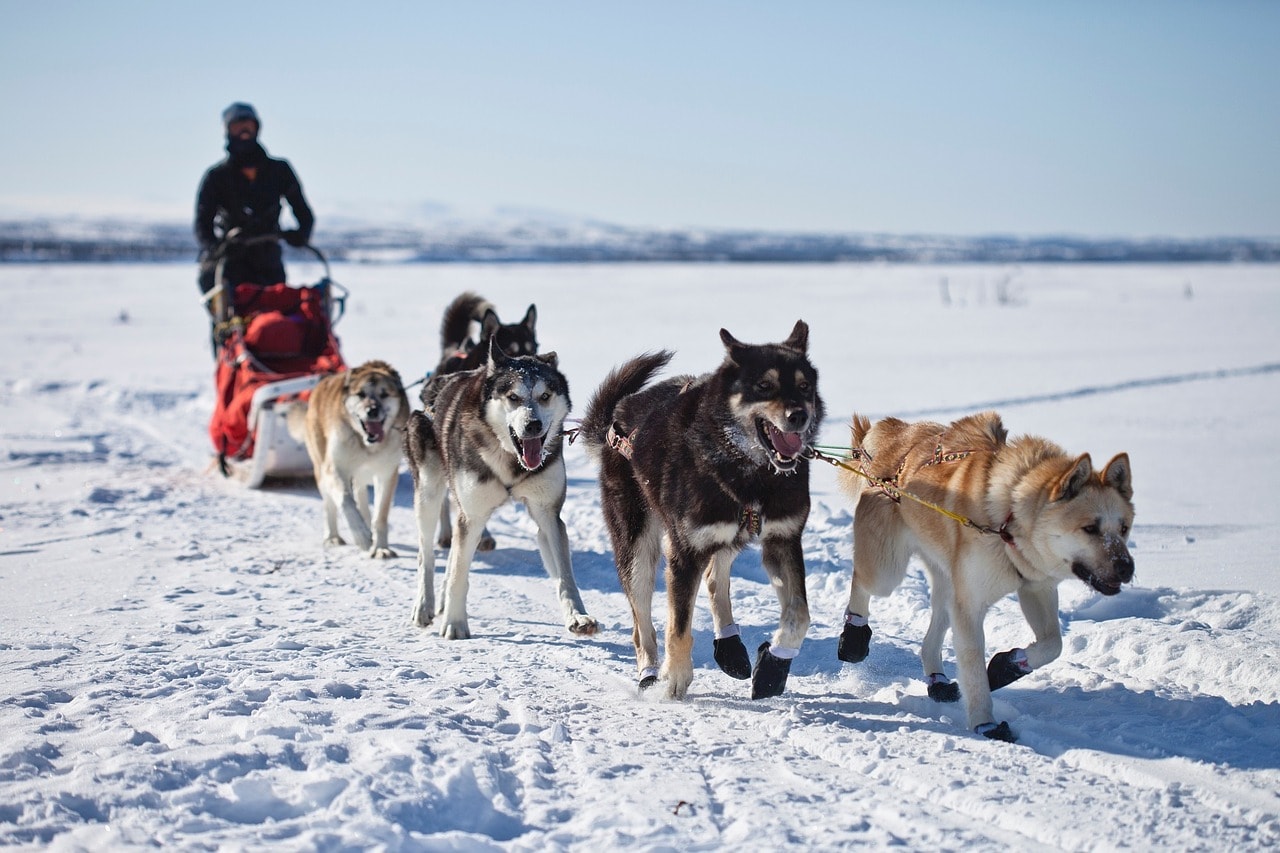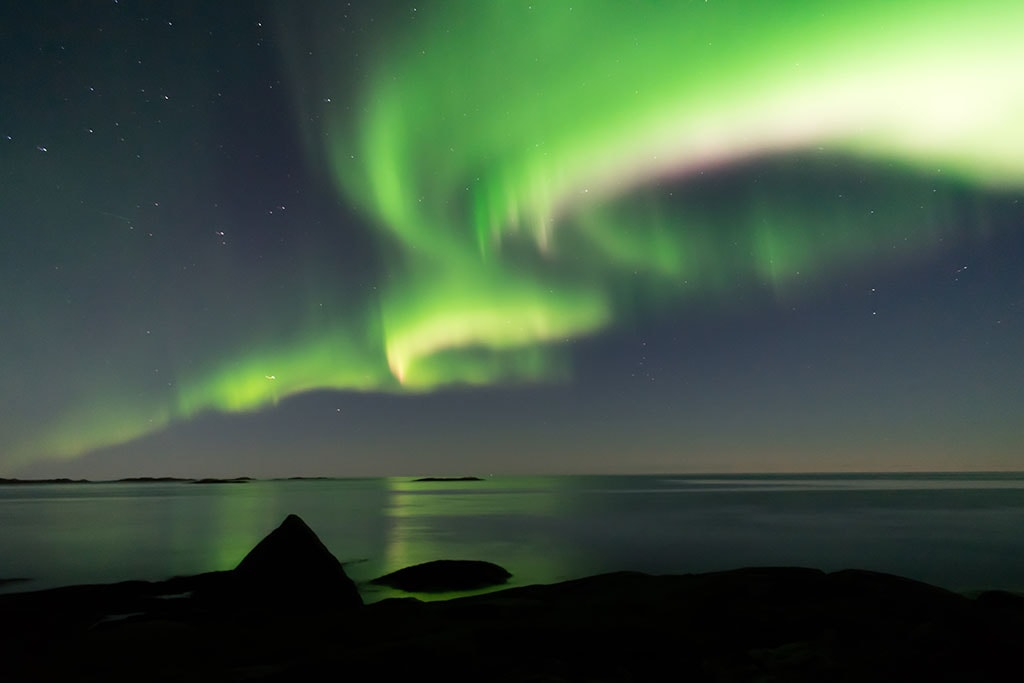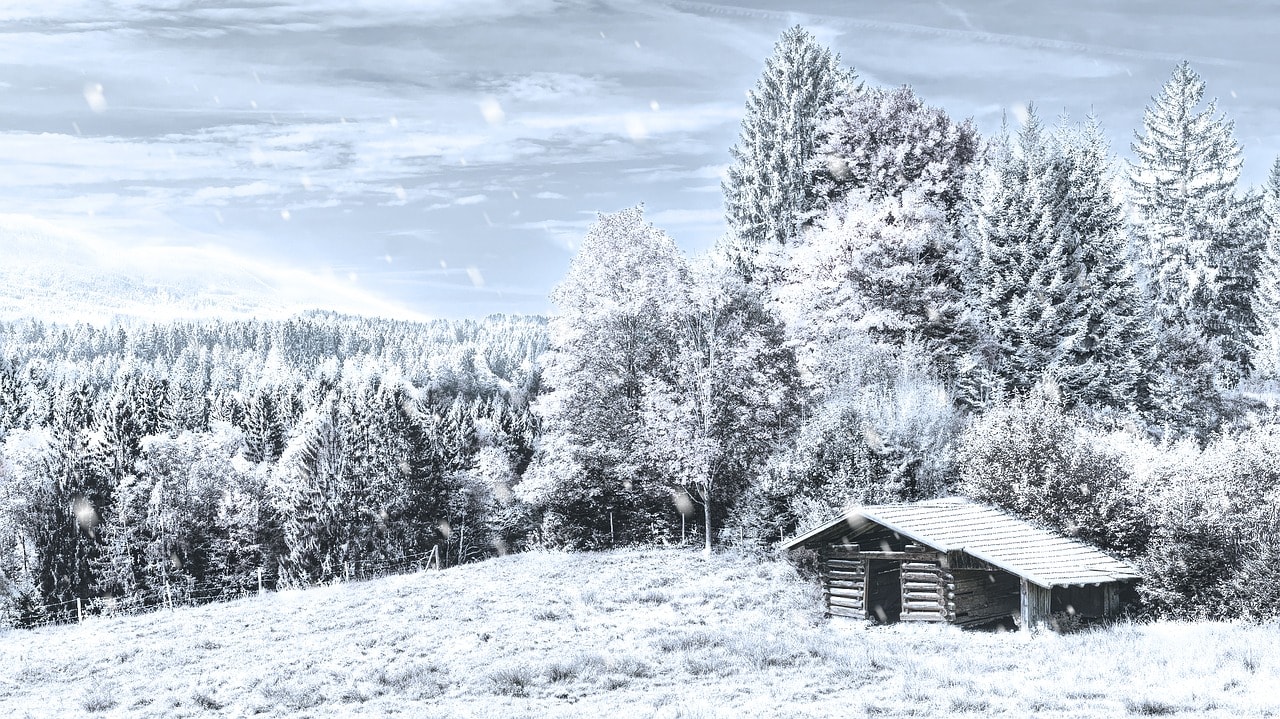Team
The Silent Way is a small family company, run by Catrine and Kenneth andour 50 Alaska huskies for 20 years now. Here you will experience realmountain adventures, we travel from lodge to lodge in all conditions that ouramazing mountain world give us. The Silent Way is known for their very good andlocal food and our very behaved and social dogs. We won the wilderness chef competition 2007.
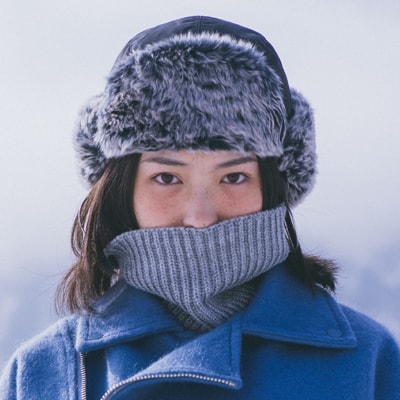
Katherine
Owner
Catrine is born here in Umnäs and Kenneth has moved in from Norway. We have 2 kids, Sofie and Lisa. Catrine is educated as a teacher but she has been working with adventure tours in the mountains for the last 25 years, first with Icelandic horses and now with our beautiful Huskies.
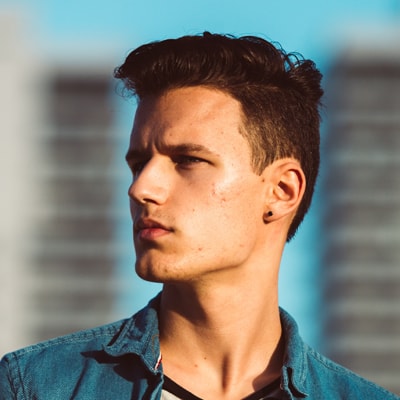
Kenneth
Owner
Kenneth is educated as a carpenter and mountain guide. His been in the mountains for the last 22 years, climbing, skiing and of course on tour with our hard working Huskies. He started the company because ofour love to our nature, the dogs and the willing to survive in the beautiful “middle of nowhere”.
General Information
As a guest you will enjoy the expert help of our professional guides who will take care of you in every possible way. You will be in charge of your own team of 5-8 dogs. The tour leader will manage a team of 8 to 12 dogs and carry most of the food and equipment. Your personal belongings, some dog food and equipment will be inyour own sledge. We travel between 30 to 55 kilometers each day. Tours will normally combine point-to-point itinerary moving to new overnight cabins with one or two day sledding tours, giving the chance to run with faster, lighter sleds. Along the route you will stay in simple but comfortable wilderness cabins, some with sauna facilities to soothe your muscles after along day's mushing on the trail. During the tour you can choose to be involved as much as you like to help with everything, take care of our teams together, bring water, cleaning after the dogs, and feed them and so on. The guide cooks all the meals during the tour.
Winter everywhere
An extended dog sledding expedition inside the Arctic Circle with your own team of Siberian Huskies. You will enjoy, life-long experience. Ideal trip for all members of your family.
Learn moreHusky
The Husky: intelligent, good-natured - and born to run! Dog sledding is a real adventure - there is quite simply nothing like the sensation of being in control of your own dogsled, putting your trust in yourdogs and earning their friendship
Learn moreLapland
Swedish Lapland is also an ideal location to see the Northern Lights.The long, dark Arctic night provides good chances to see this spectacular natural phenomenon during your tour.
Learn moreOur Pack
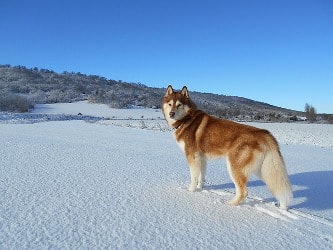
Magento
Magneto has the expression of a devil, with his black coat snd pinching blue eyes, but the truth is that he is a soft, easy and super kind dog. He is very gentle, friendly with the pack and humans he knows well. We are totally taken by this athletic boy, who has already put his feet on distance racing in the past.
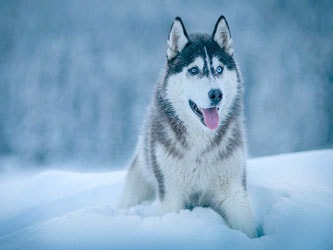
Snow
Snow is sensitive, totally loving boy who always shines a big smile at us. He nearly "melts" with happiness, when we praize him after a job well done in the team. He is absolutly conflict free and friendly with other dogs and humans. He is a wonderful and very much needed assest to our team as he is a strong and determined dog.
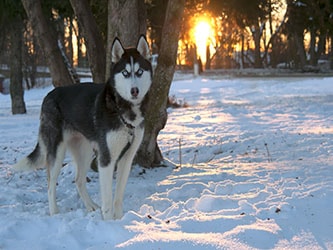
Crime
Crime is probably the best dog I have ever run. He is a very fast and hard driving leaddog. He runs straight through deep snow, storms, water or anything else that comes his way. He is a magnificent dog with a lot of power.He is the strongest engine and spirit of the team. He sure is one of our favourites we hardly imagine wouldn´t be a part of our lifes.
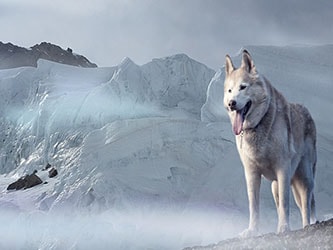
Frosti
Frosti is a very stubborn dog, but when I really depended on him under race conditions, he never failed me once so far.He is a very tough, hardy and strong dog, with the will and strenght of a bull. He never gives up and has the most elegant, fluid movement. It is pleasure to watch him work in the team - his work ethic is incredible.A huge cuddly bear, but sometimes stubborn as a donkey.
Testimonials
Our customers love us! Read what they have to say below.
"Outdoor enthusiasts can experience the Northern Lights on adog-sledding adventure through Swedish Lapland."
"Challenging but accessible, this expedition takes you through silent ancient woodland and across frozen lakes and rivers."
"I loved the whole dog sledding experience. It was tough at timesbut I didn't expect it to be easy."
Services
Born to run
“These dogs, even though they don’t speak, manage to communicate to our visitors about the importance of wild spaces.”
Our Tours
On this tour we follow our tracks in the biggest Nature reserve in Europe –Vindelmountain Nature reserve and on our home mountain Gardfjället.
Day 1: The first day out with the dogs. We meet in the dog yard and pack the last stuff in our sleds. You learn how to harness the dogs and you also get to know the names of the dogs in your team. After that it is time to pull the anchor, stand on the brake and GO FOR IT!; Överstjuktan is our first destination; the distance this day is 50 km. We go up and over a forest plateau, crossing three lakes and climb up over a mountain and down to ourlodge for the night.
Day 2: We pack our bags and go out to the dogs to feed them. After feeding we pack our sleds, help out to clean after the dogs and harness them up.Tärnasjön is our destination today; the distance is 65 km. We go out on the biglake Juktan for 16 km before we start going up and into a beautiful mountain valley down to Biellojaure Lake. We go over a big plateau to Tärna Lake beforewe reach home. When we arrive to Tärna lodge we help each other totake care of the dogs and feed them.
Day 3: This day we mush to Ammarnäs, 40 km, it is a Sami village that liesin the end of a road. We start this day by mushing out on Tärna Lake, than wego up to a big mountain plateau before we go down to Ammarnäs valley and thet wo big lakes for the day. The last 8 km down to Ammarnäs we probably do withour head torches on, amazing fun. Here we stay at the guesthouse in Ammarnäs;we eat dinner and breakfast in the restaurant. The guesthouse has shower andsauna and that’s really nice.
Day 4: Today we feed the dogs 8.00 before we go and eat a nice breakfast inthe restaurant. This day we go to Överstjuktan, 35 km from Ammarnäs. We startto climb uphill, mush over Guvertmountian and then we get a very nice and funnydownhill to the lake Överstjuktan. We go on the lake for 10 km and then theVictoria church appears. When we arrive to the lodge at Överstjuktan we helpeach other like the days before.
On this tour we follow our tracks in the biggest Nature reserve in Europe –Vindelmountain Nature reserve and on our home mountain Gardfjället.
Day 1: The first day out with the dogs. We meet in the dog yard and pack thelast stuff in our sleds. You learn how to harness the dogs and you also get toknow the names of the dogs in your team. After that it is time to pull the anchor, stand on the brake and GO FOR IT! Överstjuktan is our first destination; the distance this day is 50 km. We go up and over a forestplateau, crossing three lakes and climb up over a mountain and down to ourlodge for the night.
Day 2: We pack our bags and go out to the dogs to feed them. After feeding we pack our sleds, help out to clean after the dogs and harness them up.Tärnasjön is our destination today; the distance is 65 km. We go out on the big lake Juktan for 16 km before we start going up and into a beautiful mountain valley down to Biellojaure Lake. We go over a big plateau to Tärna Lake beforewe reach the When we arrive to Tärna lodge we help each other totake care of the dogs and feed them.
Day 3: This day we mush to Ammarnäs, 40 km, it is a Sami village that liesin the end of a road. We start this day by mushing out on Tärna Lake, than wego up to a big mountain plateau before we go down to Ammarnäs valley and thet wo big lakes for the day. The last 8 km down to Ammarnäs we probably do withour head torches on, amazing fun. Here we stay at the guesthouse in Ammarnäs;we eat dinner and breakfast in the restaurant. The guesthouse has shower and sauna and that’s really nice.
Day 4: Today we feed the dogs 8.00 before we go and eat a nice breakfast inthe restaurant. This day we go to Överstjuktan, 35 km from Ammarnäs. We start to climb uphill, mush over Guvertmountian and then we get a very nice and funnydownhill to the lake Överstjuktan. We go on the lake for 10 km and then theVictoria church appears. When we arrive to the lodge at Överstjuktan we help each other like the days before.
Day 5: Last day out with the dogs. Your guide makes breakfast before he wakes you up around 07.30. After that we pack the sledges for the last time and are on our way toUmnäs, 52 km. The last mushing day goes over mountains,lakes and in to a fairy tale landscape of forest. We mush directly in to the dog yard; we take ofthe harnesses and let the dog lose in the dog yard so we can give them really nice thanks for the tour. We eat dinner at hosts home and celebrate the tou rand remember all things that happened during your Dogsledding adventure.
Happy New Year Adventure is a tour full of adventure, dogmushing and celebrating the NewYear. This is a tour for you that like to have the comfort of a base camp but stillhave adventures trips during the day. You spend all the nights in a warm and cozy lodge in our village Umnäs.On the day trips you will see beautiful mountains, valleys, forest and frozen lakes. Day 2 – 5: Daytrips from the dog yard. During these amazing days you will see beautiful mountains, fairytale forests, deep valleys and big frozen lakes.You and the dogs in your team will learn to know each other and be friends and the silence and spectacular nature will give you a fantastic good change inyour daily life.You will learn how to harness the dogs and put them in the pulling line. If youlike you are also welcome to help with feeding and daily work in the dog yard.You eat breakfast in the lodge and dinner together with your hosts and we have lunch outside during the day. New YearsEve - After a day out together with the dogs and a nice shower you have a threecourse dinner with your host. In the evening the small and charmy pub in ourvillage is open for the one that like to meet the local people. Champagne at midnight and fireworks or we send up silent "lamps" in the sky.
Image Gallery
Examples of how we live here in Lapland
Our picture gallery contains pictures from our dogsledding tours, holidays and expeditions. Browse through our gallery and get a glimpse of what the Silent Way is all about. This way you can overview the changes in weather and conditions in north Sweden, already at the website. Of course it is impossible to fully experience the Silent Way through pictures; it is something that simply has to be enjoyed live.
Pricing
- Stars and Northern Light
- $329.99
- Guided tour
- 5-7 dogs per sled
- Nature
- 180km
- Book now
- Sunshine Awakening Discount now!
- $599.99
- Guided tour
- 5-7 dogs per sled
- Beautyful scenery
- 250 km
- Book now
- Happy New Year Adventure
- $ 224.99
- Guided tour
- New year celebration
- Sauna
- Family program
- Book now
Frequently asked questions
You should have a general good level of fitness and enjoy the outdoors. You should also be comfortable living in close proximity with others. Minimum age 18. No previous dog sledding experience is required. Dog sledding can be physically demanding. You must be able to brake the sled when going downhill and also assist the dogs during uphill sections by stepping off and running behind the sled for short distances (note, however, that this tour runs in a landscape of frozen lakes, rivers and forest so will be less demanding than sledding in mountain terrain). Tasks around the cabins (fetching water, chopping wood, etc) can also be physically demanding.
What happens on a "typical" day on a hut-to-hut or winter camping dog sledding tour?
This depends on snow conditions, weather and type of terrain. On a normal dog sledding day during an extended tour you will get up, make a fire, heat water for the dogs, go out and feed the dogs and clear the dog toilet waste. Then you have breakfast, pack everything together, clean out the cabin or break camp, load the sleds and start the journey for the day. During the day, you will stop to have lunch outdoors along the way, perhaps preparing lunch over an open fire. When you reach your destination for the day, you will prepare the dogs for the night. Exact procedure for this will vary depending on the tour and on the weather, but will often involve putting the dogs on a long wire and if necessary digging a wall of snow for the dogs to protect them from the wind. Depending on facilities and your accommodation for the night, you may need to melt water for the dogs to drink. After feeding and seeing to the dogs, it's time to relax and enjoy your evening - reflecting on the day's adventures with your fellow mushers, preparing and cooking dinner together and maybe even taking a sauna to soothe those tired muscles!
What clothing will I need to go dog sledding?
For all our dog sledding holidays in Sweden, Norway or Finland, specialist winter outer clothing you will need for your tour is included, which normally consists of warm outer layer (in many cases a snowmobile suit), warm boots, hat and gloves. Clothing provided varies slightly depending on the tour - see tour information for details.
Participants will normally need to bring only their own base and mid-layer clothing. A detailed recommended packing list will be included in your booking documentation. For your clothing, we recommend you use the layer principle:
- Closest to your body an inner layer that transports humidity away from the body, such as a woollen base layer top and long-johns.
- Then a second layer that keeps in the warmth your body generates and absorbs the humidity from the inner layer, such as a fleece or jumper.
- Then a second layer that keeps in the warmth your body generates and absorbs the humidity from the inner layer, such as a fleece or jumper.
- The outer layer should protect you from weather and wind and be wind- and waterproof. This clothing is provided as standard.
You should also have something to cover your face, such as a scarf or Buff, and ski glasses or goggles to protect your eyes and improve vision. Do not use cotton on the inner layers closest to your body, as cotton collects the humidity your body generates. The clothing gets heavy and chills you. Better materials to use are synthetics, wool etc.
Dog team members are given titles according to their position in the team relative to the sled. These include leaders or lead dogs, swing dogs, team dogs, and wheelers or wheel dogs. Lead dogs steer the rest of the team and set the pace.
Leaders may be single or double; the latter is more common now, though single leaders used to be more common during the mid-20th century. Sometimes a leader may be unhitched (a loose or free leader) to find the trail for the rest of the team, but the practice is uncommon and is not allowed at races. Qualities for a good lead dog are intelligence, initiative, common sense, and the ability to find a trail in bad conditions.
Swing dogs or point dogs are directly behind the leader (one dog if the team is in single hitch). They swing the rest of the team behind them in turns or curves on the trail. (Some mushers use the term swag dog to denote a team dog.)
Team dogs are those between the wheelers and the swing dogs, and add power to the team. A small team may not have dogs in this position. Alternatively, the term may be used to describe any dog in a dog team. Wheel dogs are those nearest the sled and musher, and a good wheeler must have a relatively calm temperament so as not to be startled by the sled moving just behind it. Strength, steadiness, and ability to help guide the sled around tight curves are qualities valued in "wheelers."
The Alaskan Husky is a mongrel that is bred for one specific purpose—to pull a sled for as long as possible. Due to their mixed bloodlines, their appearance and temperament varies highly from dog to dog, but generally they are very friendly toward humans and have loyal pack instincts.Breeding sled dogs is still a fine art today. A good lead dog can sell for as much as $5,000, and some kennel owners will lease out race dogs to mushers for as much as $1,000 per dog.
Diet: Alaskan Huskies bred for racing require significantly more protein and calories than your average domestic dog—they burn as many as 10,000-to-14,000 calories on the trail a day, compared to the 1,000 calories a typical house dog burns in a day. A standard diet is raw meat and kibble mixed with water to help them stay hysrated. (Despite the enormous amount of energy that the dogs use while running, they tend to be reluctant to drink plain water, especially when tired.)
Exercise: The Alaskan Husky is an incredibly energetic animal that needs to be run often. In the summer offseason, Iditarod mushers often send their dogs to run commercial tours on the glaciers in northern Alaska to keep fit. They will also harness their dogs to a vehicle other than a sled—an ATV in neutral, for example—to run the dogs when there isn’t enough snow on the trails, according to Dana Grant. Iditarod racers will generally start running their dogs on a strict training routine in September or October to prepare for the race. During the winter race season, canine competitors generally run harnessed to a sled for about five hours, five or six days a week. In the Iditarod, they will run much more than that, clocking 12 or more hours a day with three- to six-hour breaks, and one 24-hour rest at some point during the week-and-a-half-long race.
Training: Mushers typically train dozens of dogs before settling on a core team. They start training at about nine months of age, and the best of dogs can race until they are nine or ten years old. Before they are ready to run in a harness, some trainers will run the pups through obstacle courses or encourage them to chase vehicles like ATVs. By two years old, dogs are ready to race in the Iditarod, and a trainer will put together a team of 16 dogs that run well together. It’s particularly important during training to find a lead dog that is smart, can hear commands from the musher on the sled (“gee” means left; “haw” means right), and is not easily distracted by wildlife or other dog sleds.
The strongest dogs are generally placed closer to the sled, in the rear of the pack, but for the wheel position right next to the sled, smaller dogs are required so they do not get rubbed raw by their harnesses. Fights occasionally erupt during a long race, but they rarely last long, because race dogs are trained to respond quickly to a musher’s commands. To prevent fights, some mushers believe in placing males and females side by side. Most mushers run a combination of male and female dogs, but some mushers believe that single-sex teams work best. Out on the trail, mushers are unquestionably the alpha of the pack, and that means more than just telling the dogs what to do and when to turn. If a musher turns frustrated or disheartened, which is easy to do in a frigid 10-day race, it can affect the dynamic of the whole team.
